Theme Parks & Themed Entertainment
Adam Shell & Nicholas Kraft traveled from Disneyland to Detroit “Pursuing Happiness”
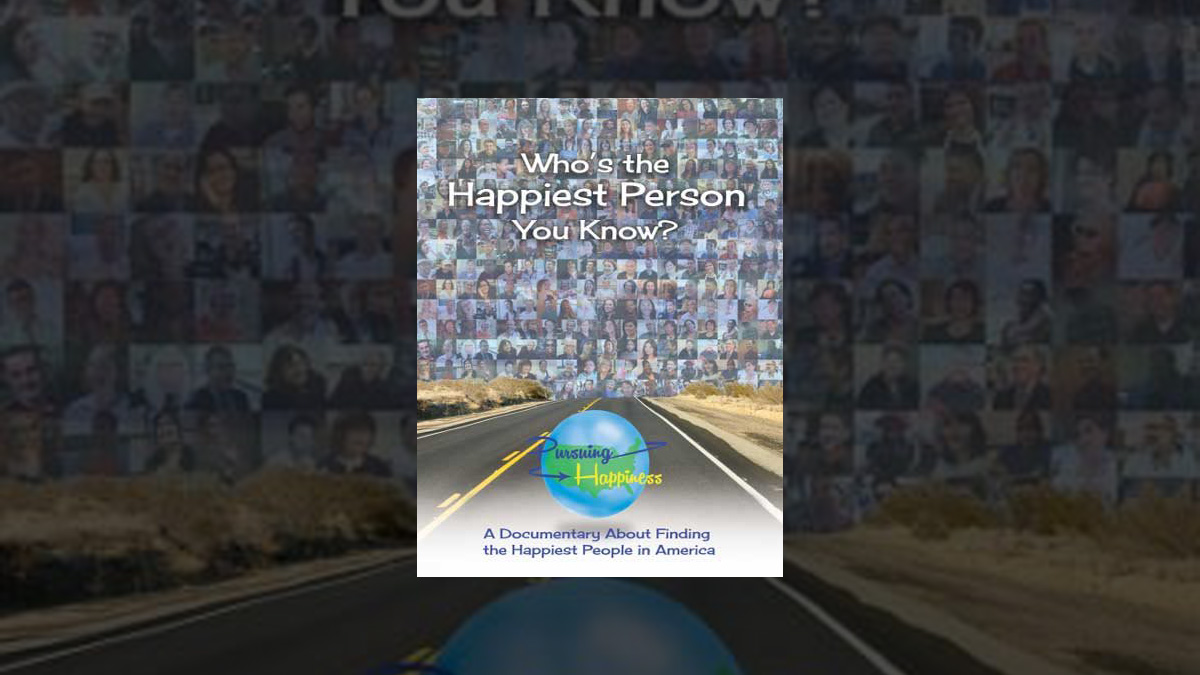
Pursuing happiness. that’s a universal quest for people
around the United States and around the world. Who doesn’t want to live a
meaningful, happy life? But what exactly is happiness?
Documentary filmmaker Adam Shell and producer Nicholas Kraft
decided to investigate the subject a short time after Shell completed
an earlier documentary, “Finding Kraftland,” that featured Nicolas Kraft and his
father, Richard Kraft, a major globetrotting Disney collector, music fan and pop
culture enthusiast.
“Pursuing Happiness” will be screened at 5 p.m. Saturday, May 2, at The Delta King as part of the Sacramento Film Festival. Tickets for
this “ultimate feel good” documentary can be purchased at www.SacramentoFilmFestival.com.
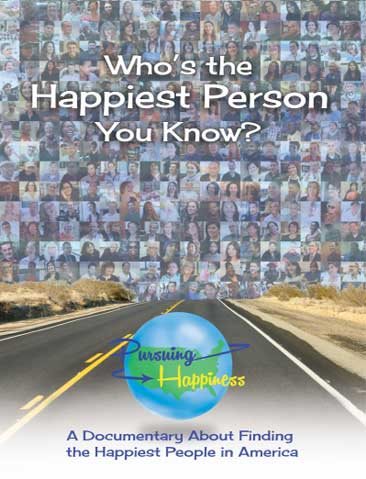
The following is a Q&A session with the filmmakers:
Tell me a bit about your friendship. Did it start with “Finding
Kraftland” or before? What did you learn doing that project that helped you on “Pursuing
Happiness”?
Shell: Nicholas’ father asked me to edit and co-direct the
most overproduced home movie of all time, ‘Finding Kraftland,
despite only
being an acquaintance of his. You don’t spend months going through someone’s home
videos and interviewing all their friends without becoming a close friend
yourself and, ever since, I’ve been very close with both Richard and Nicholas.
What made you interested in tackling the topic of happiness?

Shell: In part, it grew out of touring Finding Kraftland at
festivals: time and again people would tell me that Richard’s lust for life attitude
inspired them to bring more joy into their own lives. That planted a seed
for me.
The real inspiration though came from being fed up with the
onslaught of bad news that dominates the media. It seemed everything was
a sensationalized tragedy and that constant focus on what was
wrong in our world had a tangible effect on my life – the conversations I
was having, the attitude of those around me, it was all so negative.
Kraft: For me, there is nothing more interesting in the
world than people – why are we the way we are? When Adam asked me to help him
with this kooky idea of making a documentary about happiness, it
sounded like an amazing opportunity to learn more about people in a truly
unique way.
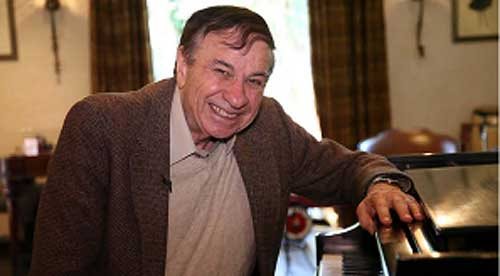
Disney Legend Richard Sherman
Tell me about your interview with Disney Legend Richard
Sherman.
Kraft: What an honor. We should have called off our search
for the happiest people in America
after spending the day with Richard – the search was over, we found him!
Shell: As a musician myself, I wanted to know how it was
possible for someone to make a career out of writing truly happy songs. We
have this trope in our culture of the “tortured artist” and The
Sherman Brothers, who have written some of the most recognizable, beloved, and
fantastic songs in American history are anything but that. And he admitted
that writing happy songs isn’t easy, “writing a really originally happy
tune … you’ve gotta dig for that.” I think that’s a great metaphor for
happiness itself; it’s so easy to go to the dark side and give in to negativity,
but to lead a happy life … you’ve gotta dig for that.
Did Richard Sherman discuss Walt or Disneyland
being the “Happiest Place
on Earth”?
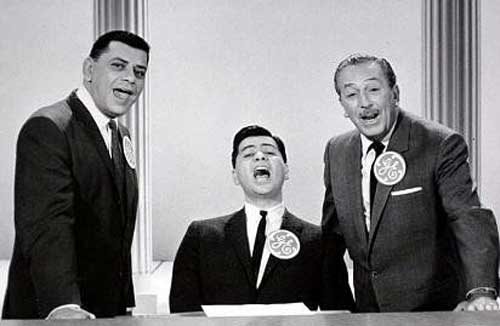
Kraft: You can’t make a documentary about happiness in America
without talking about Disneyland – especially
when someone from the Kraft family is involved in the making of the film. Richard Sherman
described Walt as a “purveyor of joy” and one of the things we ended up
discussing with him was the power of giving. You think you’re going to interview
this Disney Legend about his music – and we did – but the real heart of
Richard Sherman, and Walt of course, is that these men derive so
much pleasure from doing things for others.
In Walt’s case, that was providing a place for families to
have a truly memorable experience together. For The Sherman Brothers,
that was giving the gift of song – fun, uplifting, sweet songs – to
millions of people.
Shell: I have two young children and there is nothing more
fun than spending a day at Disneyland with
them. There is this unrivaled joy they experience that is truly infectious. It’s the same joy I
experienced as a kid and so many millions of people experience every year. Truth
be told, I still experience it even when I visit without my kids. Is it the
rides? Sure. Is it the music and the costumes and the thrill of meeting Mickey (or
Elsa if you’re my daughter)? Absolutely. But the real heart of it is
that shared experience we’re having together. The “stuff” isn’t so much
making us happy as it is providing an environment that’s conducive to
laughing, having fun, and sharing that together.

There is something else about Disneyland
that I only really began to appreciate after making this film. Disneyland
takes extreme care in ensuring that everything is always presented with perfection:
The perfectly manicured flowers to the smiles and gracious attitudes of
all the cast members. They make the effort to present themselves in the
light they want to be remembered for and, as a result, that is the way
the world thinks of Disneyland. The metaphor for me as
it relates to happiness is that we all have the ability to present ourselves in whatever way we
choose and in that presentation that is our experience. If we take the time and
effort to put on a smile and show our very best to the world our experience
then will be just that.
We can’t all live in Disneyland – unless
of course you’re Nicholas’ father – but we can all create environments that are conducive to
connecting with one another and being happy.
Tell me a bit about your own relationship with happiness and
how you personally define it?
Shell: Happiness and I have an open relationship – sometimes
we’re together, and sometimes I’m sad. Sometimes I’m hurt. Sometimes
my kids are kicking and screaming and driving me up a wall and I
just want to run away to a tropical island.
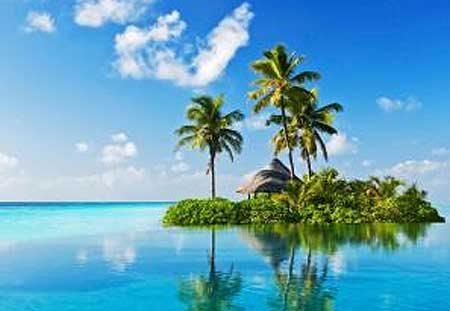
You’ll see in the film that we define happiness in two parts
– Hedonic and Eudaimonic. The first is what we typically think of as
happiness – a smile, a great meal, laughing with friends. The latter is about
fulfillment and purpose. So for me, I define it as a healthy balance of both
of these things: I want a life filled with Hedonic pleasures but I also know
that the richness of life – the ups and the downs – is what really makes it
all worth living. We explore this in great depth in the film.
How challenging was it to edit the several hours of material
you gathered into the final 80 minute film? Are you satisfied with “Pursuing
Happiness” and the response you’ve received from those who’ve seen it? How have
the people you interviewed responded to the film?
Shell: When you spend nearly two years gathering hundreds of
hours of footage from more than 400 people and no real road map of
what it all means, the most difficult task is making sense of it all. For
me this is one of the best parts of documentary filmmaking. Unlike a narrative
film where a writer spends a significant amount of time writing and
rewriting a screenplay to flesh out characters and story before a single
frame of footage is shot, the thing I like best about documentaries
is working the exact opposite way. It’s kind of like doing an intense
research paper in school. You go out and gather a ton of information on a
subject or a person and then have to weave it all together in a way that make
sense and is entertaining. And, usually you become an expert on the
subject in the process. I never had much of an agenda with what the final
product was going to look like, but I always knew what I wanted it to
achieve and what I wanted audiences to feel when watching the film. I always
say, if you have to, make them laugh and cry and then you can make them think
… I think we achieved that. One of the best comments we have received
during a Q&A was when a woman said “this should be required
viewing to be a human.” I think that says it all.
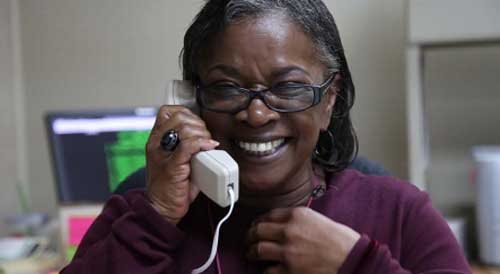
As for the people in the film, the ones who have seen it
have responded very favorably. John Lawson, one of our interviewees who
lost both of his arms, has seen it twice now. When we interviewed him he was
joking around with me about how challenging difficult it was going
to be to make something interesting out of this project and, kind of
sarcastically, he wished me luck. After the first screening, he said he just
didn’t believe how we were able to make such an impactful film and he was
honored to be a part of it.
Kraft: One of the greatest lessons for me in making this
film was to just go for it. We set out with a very loose concept and no story
whatsoever. We had cameras, hundreds of referrals, and a great passion for
making this film. Of course, that means that we faced some great
challenges after collecting 300 hours of footage – how did any of this fit
together?
Editing the film was like putting together a puzzle with an
infinite number of pieces and no picture on the front of the box to go off of. What
was helpful was giving ourselves some limits: it has to be under 90
minutes, it needs to include these people and these concepts, and well that’s it,
really, ha! It was a tough process to have to leave out so much great
footage, but our goal for the film was to create a platform for discussion
and the film is only one aspect. We hope to release as much of the additional
footage as possible – perhaps online – because it deserves to be seen.
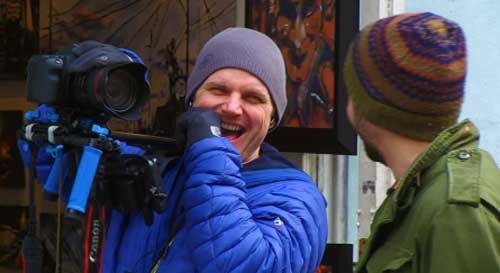
The film includes several experts – from doctors to
theologians – talking about happiness and it seems like happiness is defined by two well
represented groups in the film. Tell me a bit more about both groups: The
people who choose to live in the present as much as possible because of illness,
tragedy or it’s their nature and those who derive their pleasure from making others happy
as a key part of their lives.
Shell: I kinda co-opted the phrase “aha moment,” but it’s
what I we strove to create in this film: a combination of technical
information provided by experts in various fields and then real life examples from
everyday people. I think it’s very easy to learn something, but to actually
have it make an impact and inspire change, it needs to strike an emotional
chord and that is what the everyday people provide.
For example: if I explain to you that being selfless is one
of the best ways to be happier, you probably understand that – chances are
you already know that! But if you then seen a beautiful example of
selflessness that really resonates with you, you’re more likely – I think – to
remember that down the line and implement it into your own life. It is
very similar to how we imitate people we admire. We might not do it consciously,
but we do it.
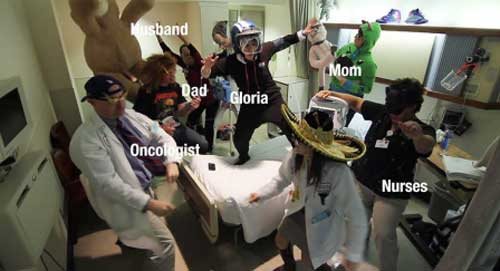
Tell me a little more about Gloria Borges’ story and her
cancer fight. Was there a friendship that preceded the filming? What made her story
so intriguing and how did she inspire you as filmmakers?
Shell: I knew Gloria prior to making the film because she
worked with my wife. She was my referral for the happiest person I know,
and anyone who sees the film will immediately understand why. Nicholas has
the more interesting story as it relates to Gloria, and his
experience for me was proof that this project was going to work.
Kraft: Gloria was one of the first people we interviewed,
and while I was certainly excited by the project, I wasn’t gung-ho, all in, 100%
sold until we met Gloria. That was a life-changing experience for me,
which is crazy because we only spent two hours with her. But that’s all it
took; two hours hanging at her house and I was forever changed – she was all
I could talk about for weeks on end, “I met the most amazing, inspiring,
and awesome person the other day and I have to tell you about her.”
Shell: That was it. When we walked out of her house I was
kind of amazed at Nicholas’ reaction. For me it was just another day
hanging out with someone I had known for years and I wasn’t that phased by it.
But seeing how someone new reacted to her, that is when I knew that if
we could find more people like Gloria and share their stories, this film
would hopefully have a profound impact on audiences and really ignite
conversations.

Tell me a little more about Kyle Bartell and Charles Molnar
and their “Sit On It, Detroit” bus
benches/public library efforts.
Shell: Whenever we told people we were going to Detroit
for the film, they all said the same thing: good luck! Again, the news is so
negative – all you hear about Detroit is that it’s bankrupt, corrupt, and in
shambles. But of course, all of the time we spent there was with incredibly
happy, empowered, and helpful people, such as the Sit On It Detroit
guys.
Kraft: What I love about them is that if I were to tell you
I met two people who had taken it upon themselves to rebuild the city of
Detroit one bus stop at a time, you would never in a million years guess
that they were those two characters.
Why do you think the U.S.
is ranked 23rd in the U.N. happiness report? Is there growing pessimism because of political gridlock, the
growing income inequality gap, self-imposed or societal pressures – the
mild to moderate day-to-day stress that keeps people “in the red
zone”? Were you surprised by the evidence that after $75,000 in annual
income, there’s little correlation between wealth and happiness? (Money may not buy
happiness, but for people living near poverty, more money can make a
difference in their lives and their loved ones).
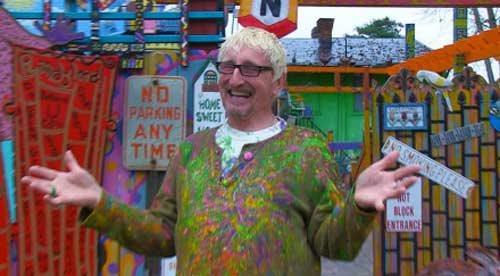
Shell: I’ll answer the second question and leave the first
for Nicholas. No, I was not surprised by the correlation (or lack thereof) between
income and happiness. Does anyone truly believe money can buy
happiness? I don’t think so, and yet we can’t get out of the habit of acting as
though it can. What I was surprised to learn though is that you can use
your money to “buy” happiness; we just go about it completely backwards.
Kraft: Why do we rank 23rd? That’s a tough question because
you have to take into account the ways in which they measure happiness
as well as ask yourself how effective it is to measure something subjective
across such varied cultures. But I can tell you something that’s
certainly not helping us in the rankings: we are the most individualistic country on
the planet. In the galaxy. In the universe!!! Doesn’t it sounds more intense
when I say “in the universe!!!”?
There are plenty of positive things about being
individualistic, but much like income, at a certain point, being more self-centered doesn’t
make us any happier and – I think – actually starts to impede on our
well being.
What is it that you hope viewers take away from seeing “Pursuing
Happiness”?
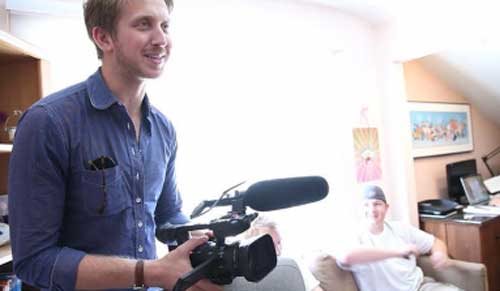
Shell: Pursuing Happiness, to me, is a conversation starter.
What people take away depends completely on who they are and I believe
there’s a lot in this film for everyone. But my greatest hope is that this
film starts meaningful conversations about fulfillment and happiness. To
get back to your first question: we spend a lot of time discussing what’s
wrong in the world or being distracted by the latest celebrity gossip. I
hope this inspires some people to start different conversations at dinner with
their families.
Kraft: Ditto!
For more information about the film and additional film
festival screenings, visit: http://www.pursuinghappiness.com/aboutthefilm.html
History
The Evolution and History of Mickey’s ToonTown

Disneyland in Anaheim, California, holds a special place in the hearts of Disney fans worldwide, I mean heck, it’s where the magic began after all. Over the years it’s become a place that people visit in search of memorable experiences. One fan favorite area of the park is Mickey’s Toontown, a unique land that lets guests step right into the colorful, “Toony” world of Disney animation. With the recent reimagining of the land and the introduction of Micky and Minnies Runaway Railway, have you ever wondered how this land came to be?
There is a fascinating backstory of how Mickey’s Toontown came into existence. It’s a tale of strategic vision, the influence of Disney executives, and a commitment to meeting the needs of Disney’s valued guests.
The Beginning: Mickey’s Birthdayland
The story of Mickey’s Toontown starts with Mickey’s Birthdayland at Walt Disney World’s Magic Kingdom. Opened in 1988 to celebrate Mickey Mouse’s 60th birthday, this temporary attraction was met with such overwhelming popularity that it inspired Disney executives to think bigger. The idea was to create a permanent, immersive land where guests could step into the animated world of Mickey Mouse and his friends.
In the early ’90s, Disneyland was in need of a refresh. Michael Eisner, the visionary leader of The Walt Disney Company at the time, had an audacious idea: create a brand-new land in Disneyland that would celebrate Disney characters in a whole new way. This was the birth of Mickey’s Toontown.
Initially, Disney’s creative minds toyed with various concepts, including the idea of crafting a 100-Acre Woods or a land inspired by the Muppets. However, the turning point came when they considered the success of “Who Framed Roger Rabbit.” This film’s popularity and the desire to capitalize on contemporary trends set the stage for Toontown’s creation.
From Concept to Reality: The Birth of Toontown
In 1993, Mickey’s Toontown opened its gates at Disneyland, marking the first time in Disney Park history where guests could experience a fully realized, three-dimensional world of animation. This new land was not just a collection of attractions but a living, breathing community where Disney characters “lived,” worked, and played.
Building Challenges: Innovative Solutions
The design of Mickey’s Toontown broke new ground in theme park aesthetics. Imagineers were tasked with bringing the two-dimensional world of cartoons into a three-dimensional space. This led to the creation of over 2000 custom-built props and structures that embodied the ‘squash and stretch’ principle of animation, giving Toontown its distinctiveness.
And then there was also the challenge of hiding the Team Disney Anaheim building, which bore a striking resemblance to a giant hotdog. The Imagineers had to think creatively, using balloon tests and imaginative landscaping to seamlessly integrate Toontown into the larger park.

Key Attractions: Bringing Animation to Life
Mickey’s Toontown featured several groundbreaking attractions. “Roger Rabbit’s Car Toon Spin,” inspired by the movie “Who Framed Roger Rabbit,” became a staple of Toontown, offering an innovative ride experience. Gadget’s Go-Coaster, though initially conceived as a Rescue Rangers-themed ride, became a hit with younger visitors, proving that innovative design could create memorable experiences for all ages.
Another crown jewel of Toontown is Mickey’s House, a walkthrough attraction that allowed guests to explore the home of Mickey Mouse himself. This attraction was more than just a house; it was a carefully crafted piece of Disney lore. The house was designed in the American Craftsman style, reflecting the era when Mickey would have theoretically purchased his first home in Hollywood. The attention to detail was meticulous, with over 2000 hand-crafted, custom-built props, ensuring that every corner of the house was brimming with character and charm. Interestingly, the design of Mickey’s House was inspired by a real home in Wichita Falls, making it a unique blend of real-world inspiration and Disney magic.
Mickey’s House also showcased Disney’s commitment to creating interactive and engaging experiences. Guests could make themselves at home, sitting in Mickey’s chair, listening to the radio, and exploring the many mementos and references to Mickey’s animated adventures throughout the years. This approach to attraction design – where storytelling and interactivity merged seamlessly – was a defining characteristic of ToonTown’s success.

Executive Decisions: Shaping ToonTown’s Unique Attractions
The development of Mickey’s Toontown wasn’t just about creative imagination; it was significantly influenced by strategic decisions from Disney executives. One notable input came from Jeffrey Katzenberg, who suggested incorporating a Rescue Rangers-themed ride. This idea was a reflection of the broader Disney strategy to integrate popular contemporary characters and themes into the park, ensuring that the attractions remained relevant and engaging for visitors.
In addition to Katzenberg’s influence, Frank Wells, the then-President of The Walt Disney Company, played a key role in the strategic launch of Toontown’s attractions. His decision to delay the opening of “Roger Rabbit’s Car Toon Spin” until a year after Toontown’s debut was a calculated move. It was designed to maintain public interest in the park by offering new experiences over time, thereby giving guests more reasons to return to Disneyland.
These executive decisions highlight the careful planning and foresight that went into making Toontown a dynamic and continuously appealing part of Disneyland. By integrating current trends and strategically planning the rollout of attractions, Disney executives ensured that Toontown would not only capture the hearts of visitors upon its opening but would continue to draw them back for new experiences in the years to follow.
Global Influence: Toontown’s Worldwide Appeal
The concept of Mickey’s Toontown resonated so strongly that it was replicated at Tokyo Disneyland and influenced elements in Disneyland Paris and Hong Kong Disneyland. Each park’s version of Toontown maintained the core essence of the original while adapting to its cultural and logistical environment.
Evolution and Reimagining: Toontown Today
As we approach the present day, Mickey’s Toontown has recently undergone a significant reimagining to welcome “Mickey & Minnie’s Runaway Railway” in 2023. This refurbishment aimed to enhance the land’s interactivity and appeal to a new generation of Disney fans, all while retaining the charm that has made ToonTown a beloved destination for nearly three decades.

Dive Deeper into ToonTown’s Story
Want to know more about Mickey’s Toontown and hear some fascinating behind-the-scenes stories, then check out the latest episode of Disney Unpacked on Patreon @JimHillMedia. In this episode, the main Imagineer who worked on the Toontown project shares lots of interesting stories and details that you can’t find anywhere else. It’s full of great information and fun facts, so be sure to give it a listen!
History
Unpacking the History of the Pixar Place Hotel

Pixar Place Hotel, the newly unveiled 15-story tower at the Disneyland Resort, has been making waves in the Disney community. With its unique Pixar-themed design, it promises to be a favorite among visitors.
However, before we delve into this exciting addition to the Disneyland Resort, let’s take a look at the fascinating history of this remarkable hotel.
The Emergence of the Disneyland Hotel
To truly appreciate the story of the Pixar Place Hotel, we must turn back the clock to the early days of Disneyland. While Walt Disney had the visionary ideas and funding to create the iconic theme park, he faced a challenge when it came to providing accommodations for the park’s visitors. This is where his friend Jack Wrather enters the picture.
Jack Wrather, a fellow pioneer in the television industry, stepped in to assist Walt Disney in realizing his dream. Thanks to the success of the “Lassie” TV show produced by Wrather’s company, he had the financial means to build a hotel right across from Disneyland.
The result was the Disneyland Hotel, which opened its doors in October 1955. Interestingly, the early incarnation of this hotel had more of a motel feel than a hotel, with two-story buildings reminiscent of the roadside motels popular during the 1950s. The initial Disneyland Hotel consisted of modest structures that catered to visitors looking for affordable lodging close to the park. While the rooms were basic, it marked the beginning of something extraordinary.
The Evolution: From Emerald of Anaheim to Paradise Pier
As Disneyland’s popularity continued to soar, so did the demand for expansion and improved accommodations. In 1962, the addition of an 11-story tower transformed the Disneyland Hotel, marking a significant transition from a motel to a full-fledged hotel.
The addition of the 11-story tower elevated the Disneyland Hotel into a more prominent presence on the Anaheim skyline. At the time, it was the tallest structure in all of Orange County. The hotel’s prime location across from Disneyland made it an ideal choice for visitors. With the introduction of the monorail linking the park and the hotel, accessibility became even more convenient. Unique features like the Japanese-themed reflecting pools added to the hotel’s charm, reflecting a cultural influence that extended beyond Disney’s borders.
Japanese Tourism and Its Impact
During the 1960s and 1970s, Disneyland was attracting visitors from all corners of the world, including Japan. A significant number of Japanese tourists flocked to Anaheim to experience Walt Disney’s creation. To cater to this growing market, it wasn’t just the Disneyland Hotel that aimed to capture the attention of Japanese tourists. The Japanese Village in Buena Park, inspired by a similar attraction in Nara, Japan, was another significant spot.
These attractions sought to provide a taste of Japanese culture and hospitality, showcasing elements like tea ceremonies and beautiful ponds with rare carp and black swans. However, the Japanese Village closed its doors in 1975, likely due to the highly competitive nature of the Southern California tourist market.
The Emergence of the Emerald of Anaheim
With the surge in Japanese tourism, an opportunity arose—the construction of the Emerald of Anaheim, later known as the Disneyland Pacific Hotel. In May 1984, this 15-story hotel opened its doors.
What made the Emerald unique was its ownership. It was built not by The Walt Disney Company or the Oriental Land Company (which operated Tokyo Disneyland) but by the Tokyu Group. This group of Japanese businessmen already had a pair of hotels in Hawaii and saw potential in Anaheim’s proximity to Disneyland. Thus, they decided to embark on this new venture, specifically designed to cater to Japanese tourists looking to experience Southern California.
Financial Challenges and a Changing Landscape
The late 1980s brought about two significant financial crises in Japan—the crash of the NIKKEI stock market and the collapse of the Japanese real estate market. These crises had far-reaching effects, causing Japanese tourists to postpone or cancel their trips to the United States. As a result, reservations at the Emerald of Anaheim dwindled.
To adapt to these challenging times, the Tokyu Group merged the Emerald brand with its Pacific hotel chain, attempting to weather the storm. However, the financial turmoil took its toll on the Emerald, and changes were imminent.
The Transition to the Disneyland Pacific Hotel
In 1995, The Walt Disney Company took a significant step by purchasing the hotel formerly known as the Emerald of Anaheim for $35 million. This acquisition marked a change in the hotel’s fortunes. With Disney now in control, the hotel underwent a name change, becoming the Disneyland Pacific Hotel.
Transformation to Paradise Pier
The next phase of transformation occurred when Disney decided to rebrand the hotel as Paradise Pier Hotel. This decision aligned with Disney’s broader vision for the Disneyland Resort.
While the structural changes were limited, the hotel underwent a significant cosmetic makeover. Its exterior was painted to complement the color scheme of Paradise Pier, and wave-shaped crenellations adorned the rooftop, creating an illusion of seaside charm. This transformation was Disney’s attempt to seamlessly integrate the hotel into the Paradise Pier theme of Disney’s California Adventure Park.
Looking Beyond Paradise Pier: The Shift to Pixar Place
In 2018, Disneyland Resort rebranded Paradise Pier as Pixar Pier, a thematic area dedicated to celebrating the beloved characters and stories from Pixar Animation Studios. As a part of this transition, it became evident that the hotel formally known as the Disneyland Pacific Hotel could no longer maintain its Paradise Pier theme.
With Pixar Pier in full swing and two successful Pixar-themed hotels (Toy Story Hotels in Shanghai Disneyland and Tokyo Disneyland), Disney decided to embark on a new venture—a hotel that would celebrate the vast world of Pixar. The result is Pixar Place Hotel, a 15-story tower that embraces the characters and stories from multiple Pixar movies and shorts. This fully Pixar-themed hotel is a first of its kind in the United States.
The Future of Pixar Place and Disneyland Resort
As we look ahead to the future, the Disneyland Resort continues to evolve. The recent news of a proposed $1.9 billion expansion as part of the Disneyland Forward project indicates that the area surrounding Pixar Place is expected to see further changes. Disneyland’s rich history and innovative spirit continue to shape its destiny.
In conclusion, the history of the Pixar Place Hotel is a testament to the ever-changing landscape of Disneyland Resort. From its humble beginnings as the Disneyland Hotel to its transformation into the fully Pixar-themed Pixar Place Hotel, this establishment has undergone several iterations. As Disneyland Resort continues to grow and adapt, we can only imagine what exciting developments lie ahead for this iconic destination.
If you want to hear more stories about the History of the Pixar Place hotel, check our special edition of Disney Unpacked over on YouTube.
Stay tuned for more updates and developments as we continue to explore the fascinating world of Disney, one story at a time.
History
From Birthday Wishes to Toontown Dreams: How Toontown Came to Be

In the latest release of Episode 4 of Disney Unpacked, Len and I return, joined as always by Disney Imagineering legend, Jim Shull. This two-part episode covers all things Mickey’s Birthday Land and how it ultimately led to the inspiration behind Disneyland’s fan-favorite land, “Toontown”. But let’s not get ahead of ourselves here. It all starts in the early days at Disneyland.
Early Challenges in Meeting Mickey
Picture this: it’s the late 1970s and early 1980s, and you’re at Disneyland. You want to meet the one and only Mickey Mouse, but there’s no clear way to make it happen. You rely on Character Guides, those daily printed sheets that point you in Mickey’s general direction. But let’s be honest, it was like finding a needle in a haystack. Sometimes, you got lucky; other times, not so much.

Mickey’s Birthdayland: A Birthday Wish that Came True
Fast forward to the late 1980s. Disney World faced a big challenge. The Disney-MGM Studios Theme Park was under construction, with the company’s marketing machine in full swing, hyping up the opening of Walt Disney World’s third theme park, MGM Studios, in the Spring of 1989. This extensive marketing meant that many people were opting to postpone their family’s next trip to Walt Disney World until the following year. Walt Disney World needed something compelling to motivate guests to visit Florida in 1988, the year before Disney MGM Studios opened.
Enter stage left, Mickey’s Birthdayland. For the first time ever, an entire land was dedicated to a single character – and not just any character, but the mouse who started it all. Meeting Mickey was no longer a game of chance; it was practically guaranteed.

The Birth of Birthdayland: Creative Brilliance Meets Practicality
In this episode, we dissect the birth of Mickey’s Birthdayland, an initiative that went beyond celebrating a birthday. It was a calculated move, driven by guest feedback and a need to address issues dating back to 1971. Imagineers faced the monumental task of designing an experience that honored Mickey while efficiently managing the crowds. This required the perfect blend of creative flair and logistical prowess – a hallmark of Disney’s approach to theme park design.
Evolution: From Birthdayland to Toontown
The success of Mickey’s Birthdayland was a real game-changer, setting the stage for the birth of Toontown – an entire land that elevated character-centric areas to monumental new heights. Toontown wasn’t merely a spot to meet characters; it was an immersive experience that brought Disney animation to life. In the episode, we explore its innovative designs, playful architecture, and how every nook and cranny tells a story.

Impact on Disney Parks and Guests
Mickey’s Birthdayland and Toontown didn’t just reshape the physical landscape of Disney parks; they transformed the very essence of the guest experience. These lands introduced groundbreaking ways for visitors to connect with their beloved characters, making their Disney vacations even more unforgettable.
Beyond Attractions: A Cultural Influence
But the influence of these lands goes beyond mere attractions. Our episode delves into how Mickey’s Birthdayland and Toontown left an indelible mark on Disney’s culture, reflecting the company’s relentless dedication to innovation and guest satisfaction. It’s a journey into how a single idea can grow into a cherished cornerstone of the Disney Park experience.

Unwrapping the Full Story of Mickey’s Birthdayland
Our two-part episode of Disney Unpacked is available for your viewing pleasure on our Patreon page. And for those seeking a quicker Disney fix, we’ve got a condensed version waiting for you on our YouTube channel. Thank you for being a part of our Disney Unpacked community. Stay tuned for more episodes as we continue to “Unpack” the fascinating world of Disney, one story at a time.
-
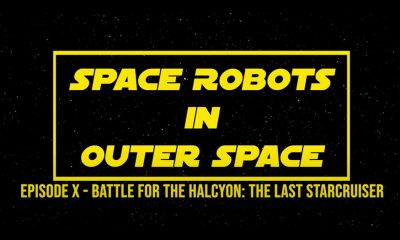
 News & Press Releases12 months ago
News & Press Releases12 months agoStar Wars Spoof: Space Robots in Outer Space Ep X: Battle for the Halcyon: The Last Starcruiser
-

 History11 months ago
History11 months ago31 Long-Gone Rides, Shows & Attractions at Disney-MGM (Hollywood Studios)
-

 News & Press Releases8 months ago
News & Press Releases8 months agoDisney Will Bring D23: The Ultimate Disney Fan Event to Anaheim, California in August 2024
-

 History3 months ago
History3 months agoFrom Birthday Wishes to Toontown Dreams: How Toontown Came to Be
-

 Theme Parks & Themed Entertainment11 months ago
Theme Parks & Themed Entertainment11 months agoFrom Aladdin to Indy – How Did We Get an Indiana Jones Stage Show at Disneyland?
-

 Theme Parks & Themed Entertainment12 months ago
Theme Parks & Themed Entertainment12 months agoHow Did We Get “Aladdin’s Oasis” at Disneyland?
-

 Theme Parks & Themed Entertainment10 months ago
Theme Parks & Themed Entertainment10 months agoWhen WDW Had a Racetrack – The Creation of the Walt Disney World Speedway
-

 Film & Movies10 months ago
Film & Movies10 months ago“Indiana Jones and the Search for Indiana Jones”








